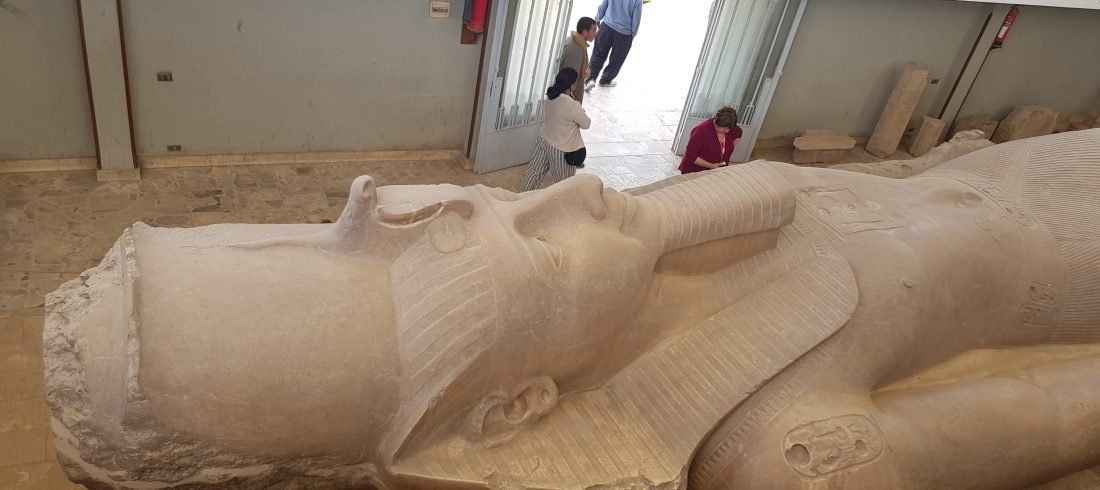Memphis
ALMOST 4,000 YEARS BEFORE THE FOUNDING OF CAIRO, Memphis was the capital of Egypt. One of the greatest cities of the ancient world, today it is marked solely by an open-air museum of meager Ends, partially redeemed by its one outstanding exhibit, the remains of a mighty statue of Ramses II.
The city itself lies buried beneath the modern-day village of M it Rahina. It was already in decay when the Arab al-As armies conquered Egypt in AD. 641. They, and their successors, used ancient Memphis as a quarry to provide building materials for their new ‘capital-later to be known as Cairo. Silt deposits from the annual flood of the Nile gradually covered the pharaonic city, until Memphis became no more than a lumpy alluvial plain on which palms rooted and peasants founded their villages. The presence of these villages, combined with a high water table (a result of the damming 0f the Nile at Aswan), means that archaeologists have never been able to
excavate the site. However, over the decades, as a new drainage ditch 0r the foundations of a house were dug, a Chink of spade against stone would signal the discovery of some ancient building block or a fragment of statue. Some of these finds are displayed at a small museum. Most striking is a colossus of Ramses II, discovered in 1820. Missing his lower legs, the king lies on his back in a specially constructed viewing pavilion, but in its original state the statue would have stood as tall as a five-story building. The garden contains more statues of Ramses 11, indicating that the great pharaoh built as prolifically here as he did in Upper Egypt. You have to wonder what has been lost. Similarly with the Sphinx here-at 80 tons the largest alabaster statue ever found. Was this just one in an avenue of sphinxes, as at Karnak temple.

